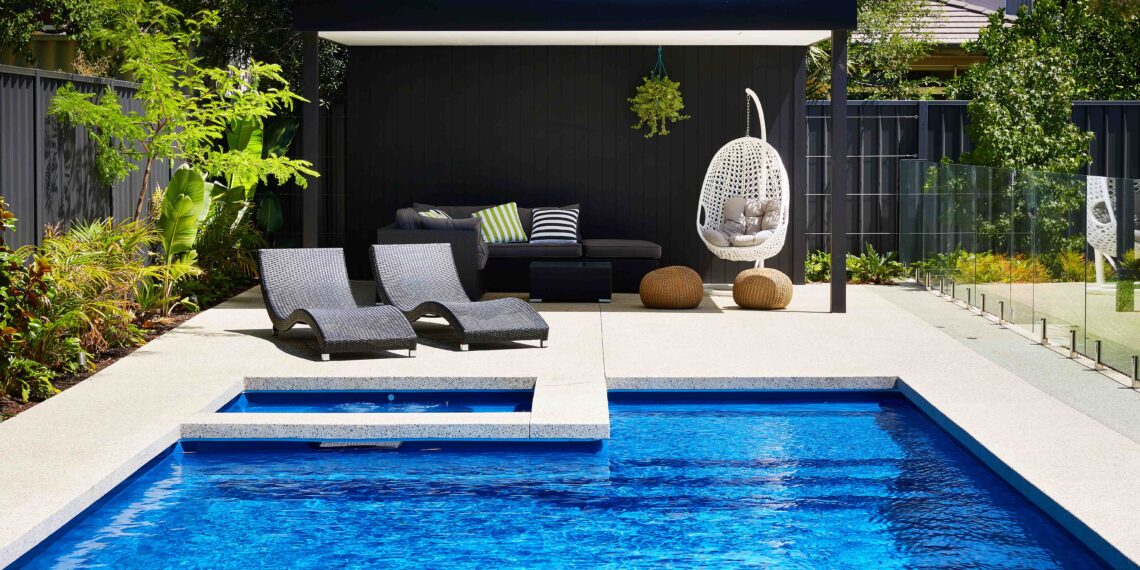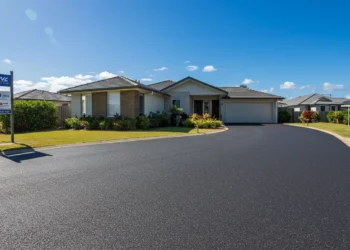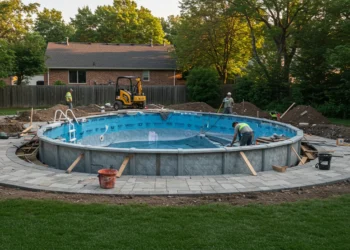Elegantly curving into the landscape, fibreglass pools have become a hallmark of modern backyard design. They offer a quick installation process, a non-porous smooth surface that’s durable and easy to maintain, and a range of sizes and shapes to fit almost any home. But as great as a fibreglass pool sounds, one question often looms large for homeowners looking to install one: does it need a retaining wall?
For starters, it’s important to understand what a retaining wall is and why it might be necessary for your Barrier Reef Pools fibreglass pool. These walls are support structures designed to hold back soil and create usable space in a sloped area. They’re not just functional; they can be an aesthetically pleasing addition to your outdoor space. But are they a must-have for your fibreglass pool? We’ll explore this question in depth, leaving you with a comprehensive understanding of retaining walls and whether one is right for your pool setup.
What is a Retaining Wall?
These walls are engineered to halt the movement of soil and provide stability to ground that would otherwise be subject to erosion. Often constructed from concrete, stone, brick, or timber, they help to counteract the lateral pressure of soil when there’s a desired change in elevation within a yard or around a structure. They come in various styles, from the strict utilitarian to the intricately designed that can tie into the aesthetics of the surrounding landscape.
The primary function These walls serve is to negate the force of gravity which causes soil to cave into more natural, sloped surfaces. This force is especially prevalent if your property has a steep slope, which could lead to significant soil erosion over time. In this context, retaining walls are crucial for maintaining the integrity of your pool area and, more broadly, for preserving your property’s landscape.
The Role of Retaining Walls for Fibreglass Pools
When it comes to fibreglass pools, the necessity of a retaining wall depends on various factors, including the slope of your property and the local terrain. If you’re installing a fibreglass pool on a flat surface with solid ground, a retaining wall might not be necessary. However, properties with a significant slope could present potential soil instability issues that a retaining wall would address and manage effectively.
Fibreglass pools are lightweight and have some flexibility, allowing them to accommodate minor ground movements without cracking. But if the ground is consistently subject to significant lateral pressure, as is the case with sloping landscapes, it can lead to various issues over time, such as leaks and warping. In such instances, a retaining wall could be a preventative measure and a wise addition to your pool project.
In short, if your pool area is on a level or slightly sloped ground, a retaining wall may not be required. But if it’s on a slope could, however slightly, potentially compromise the ground surrounding the pool, a retaining wall might be a critical component of ensuring the long-term stability of your fibreglass pool.
Also Read How to Earth a Pool Fence and Why is It Important?
Benefits of Installing a Retaining Wall
Beyond the critical role of soil stabilisation, retaining walls offer several tangible benefits, making them a worthwhile consideration for homeowners with fibreglass pools. These include:
Erosion Prevention
Retaining walls effectively prevent soil erosion by creating tiered, level areas in a sloped landscape. This not only secures the soil in place but can also add layers of plants and greenery, further reducing the risk of soil movement.
Enhanced Landscape Design
Integrating a retaining wall in your pool area design can be aesthetically pleasing, as it allows for the creation of multi-level garden beds or seating areas. The wall’s design, materials, and colours can be customised to complement your pool and overall landscape design.
Additional Support for the Pool
While fibreglass pools are designed to be strong, sitting them on a slope could benefit from the extra support provided by a retaining wall. They can help distribute the weight of the pool and counteract ground pressure, ensuring the pool stays in top condition for longer.
Improved Safety
For families with small children, a level surface around a pool is crucial. Retaining walls can create additional spaces for safe and easy access to the pool, reducing the risk of accidents on a sloped surface.
Cost and Maintenance Considerations
The decision on whether to include a retaining wall in your fibreglass pool installation should also take into account the financial implications. Retaining walls are an additional cost to your pool project, and the type of wall you choose—modular block systems, poured concrete, or natural stone, for example—can significantly affect the overall cost.
Furthermore, there are maintenance considerations. While fibreglass pools are known for their low maintenance, retaining walls can be more demanding. They often require occasional inspection for signs of wear, especially if they’re exposed to extreme weather conditions or if there are vegetation shifts that could affect the wall’s stability.
It’s essential to weigh the initial investment and long-term maintenance against the benefits of soil stability and enhanced aesthetics for your fibreglass pool project. In some cases, the cost and effort of installing a retaining wall may far outweigh the risks and challenges you’d face without one.
The Bottom Line
In conclusion, while it’s not a strict requirement for all fibreglass pools, a retaining wall offers several compelling benefits for homeowners. They can safeguard against soil erosion, enhance the stability and lifespan of the pool, and provide an opportunity to create a stunning landscape design. The decision to install it with your fibreglass pool should be informed by a careful evaluation of your property’s terrain, your budget, and your long-term design goals.
If engineering or landscaping advice is necessary, consult with professionals who specialise in fibreglass pool installation and outdoor living space design. With the right approach, a retaining wall can be both a necessary addition for your pool’s integrity and an exciting design element for your home’s outdoor aesthetics.








